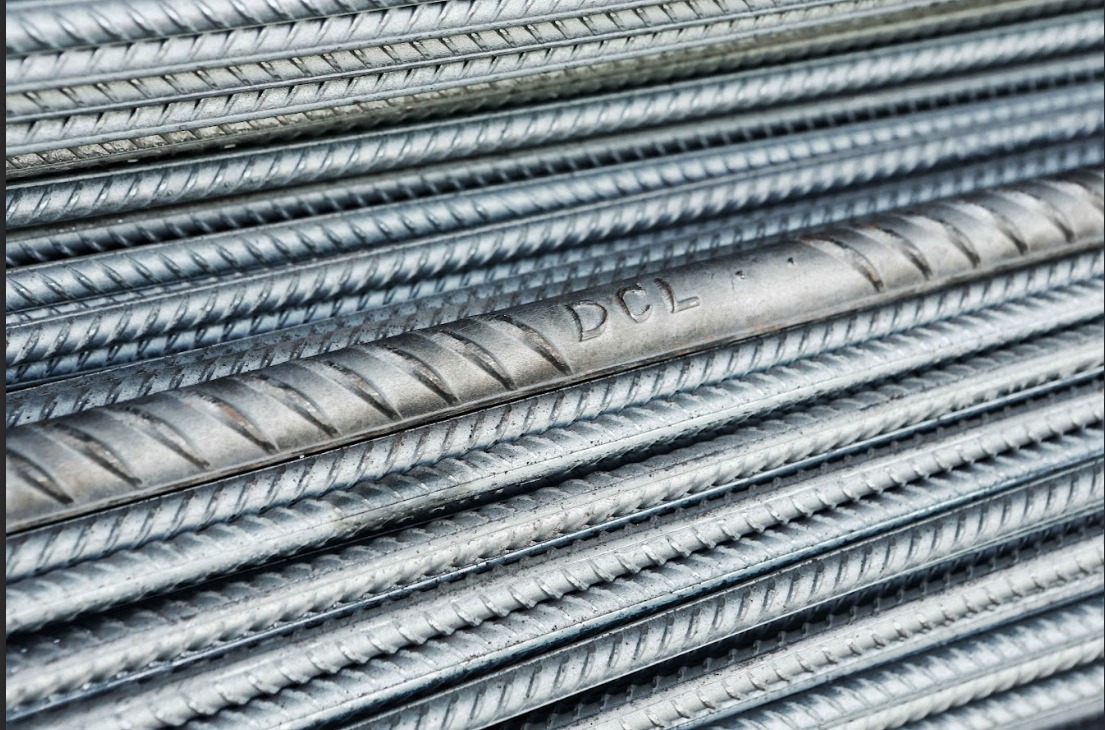 +971 2 551 0325, +971 50 441 5348
+971 2 551 0325, +971 50 441 5348
 glfsteel@emirates.net.ae
glfsteel@emirates.net.ae  +971 2 551 0325,+971 2 551 0098, +971 50 441 5348 (Only For Sales Enquiries)
+971 2 551 0325,+971 2 551 0098, +971 50 441 5348 (Only For Sales Enquiries) +971 2 551 0325, +971 50 441 5348
+971 2 551 0325, +971 50 441 5348
 glfsteel@emirates.net.ae
glfsteel@emirates.net.ae  +971 2 551 0325,+971 2 551 0098, +971 50 441 5348 (Only For Sales Enquiries)
+971 2 551 0325,+971 2 551 0098, +971 50 441 5348 (Only For Sales Enquiries)
Reinforcing steel implies TMT steel bars utilised in RCC or reinforced cement concrete structures to fortify brittle-hard concrete and provide the facility with tensile strength. Iron, carbon and other components are combined to form steel, a key element in buildings, appliances, infrastructure and much more. Molten steel is moulded to form big rectangular billets passed through a succession of dies to form reinforcing bars or rebars. Deformations may also be etched on the surface to assist in transferring loads between reinforcing steel and concrete.
Why do we need rebars or steel reinforcement?
While plain concrete has strong compression, it is also weak in tension and, thus, needs external components to infuse tensile strength. This is where steel reinforcement helps, incorporating tension and compression, making it powerful. Concrete cracks appearing due to tension loads can be successfully prevented and minimised by the tensile property offered by steel. Both steel and concrete have comparable coefficients of thermal expansion. This is because they experience similar temperature-related changes. The concrete is less stressed due to this particular property during these temperature variations.
In order to create a strong bond with the surrounding concrete, the steel reinforcing bar’s surface is patterned so that steel and concrete together can give the construction its strength. The design engineer thus combines the structural element so that concrete absorbs the compressive forces while the steel withstands the induced sheer and tensile pressures.
Most significant advantages of steel reinforcements
Steel rebars come with some unique benefits due to which they are the most preferred in the construction and other manufacturing industries.
For one, steel reinforcements are robust and can withstand the strain and other wear and tear associated with construction and building activities.
Besides, it is highly compatible with concrete. A formwork mould is made with the reinforcement, which forms the base over which fresh concrete is poured. Since the reinforcements don’t float with the concrete, the special formwork-tying process becomes obsolete, creating a more robust and firmer foundation.
Steel reinforcements can be shaped to meet unique requirements even after being made in conventional sizes. Thus, delivering finished steel rebars to the site becomes extremely simple.
Furthermore, any remaining reinforcements can always be employed in another construction, enhancing recyclability.
Distinctive characteristics of steel reinforcements
Steel bonds exceptionally well with concrete and is used as a tensioning device to hold the concrete together when compressed. Here are some features that make steel ideal for the reinforcement of concrete.
Since steel blends well with concrete, it is an advantageous reinforcing material. In reinforced concrete structures, passive bars are used, and an active reinforcement is conducted where steel wires are pre-stressed before structural loading.
The total modulus of steel reinforcement is about 29,000,000 psi, which can be employed in any project, thus simplifying the design process across various grades and sizes. Structures of lower moduli can face larger deflections and additional cracking, and more reinforcement bars may be required for better serviceability. Steel exhibits excellent tensile properties due to its elasticity.
Steel reinforcements can provide for defined cracks in a structure during overload because of their elongation. Thus, occupants are given a suitable warning about the structure’s loading. Non-elastic materials may not be able to provide the appropriate ductility to signal a failure before it happens.
Steel’s elastic qualities at below-yield loads allow a structure to rebound upon reloading. Yield strengths range from 40 to 100 ksi, independent of bar diameter. Therefore, substituting different combinations of bars in the same area becomes simple.
Steel rebars also display other crucial properties, such as uniformity across directions, strength retention, code acceptance, incredible joining strength, and thermal properties. Due to their longevity, they are the ‘go-to’ choice for concrete structures. The idea behind RC structures evolves from steel and concrete working well together and can withstand external stresses.
Speak to experts at Gulf Steel, one of the best steel companies in the UAE, for more information on the best rebars for you.